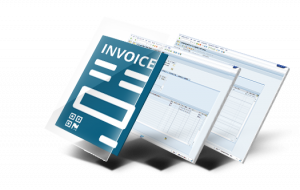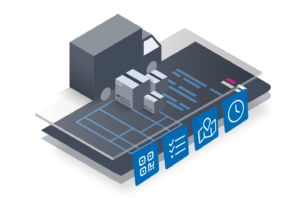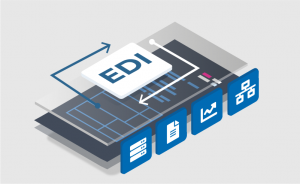Automating the procurement process has become a necessity for business efficiency. It concerns the buying and managing raw materials that a company requires to manufacture its products or provide services. This process typically involves vast cash flows and requires visibility throughout the transaction cycle, anywhere from vendor selection to the final invoice generation and payments with adjustments. A procurement plan is indispensable and can be implemented in any small to mid-tier thriving business. Successful procurement planning can define clear purchasing guidelines, place a company above its competitors, and identify anticipated goods and services for potential purchase, thus reducing expected costs.
A dynamic procurement process includes transparent, efficient, online purchase request creation by any department. The ability to vet suppliers, check budget, time, and quality, and enforce contracts are all built-in. Single-click approval capability using desktop or mobile and orders issued to suppliers, is entirely online. Other important considerations include automatic three-way matching and payment issued with built-in facilities. The ultimate goal should be a completely paperless process, from receiving receipts for goods and services to invoicing.
- Identifying the Requirement
- The buyer determines and defines business requirements. Procurement (along with the relevant business team) sketches out specifications for goods/products and terms of reference (ToR) for services, as well as statements of work (SoW).
- Creating Requisitions
- A requester fills out a purchase requisition form and submits it into the system.
- Approval
- Next, the department head and procurement officers review the submitted purchase requisitions. The requisition’s approval or rejection is based on need, budget, and validation.
- Vetting suppliers
- Screening and monitoring vendor selection is a vital step. Once the list is made, the buyer sends each vendor a request for a proposal (RFP) or quote outlining the requirements.
- Taking quotes and negotiating terms
- Suppliers return a bid on the job, detailing turnaround. This includes time, price, and pertinent material specifications. A supplier quote may also contain sales terms, payment terms, delivery terms, freight fees, insurance fees, quantity discounts, quality details, and more. After this, both parties agree on terms and conditions and finalize the deal.
- Issuing the PO
- Once negotiations with potential suppliers are concluded, the company awards the supplier with a contract and purchase order. The purchase requisition form includes a description of goods and services, department account number, authorized managers’ signatures, delivery instructions, and a quote from the authorized vendor.
- Inspection of goods
- After receiving the goods, inspection activities, including quality and quantity checks, are performed.
- Preparing the goods receipt note (GRN)
- Once the company receives the goods from the supplier, the purchasing department prepares a goods receipt. This is an internal document produced after inspecting delivery. It is compared with the purchase order for validation. The goods receipt is inspected and then approved or rejected by the authority based on the standards specified in the purchasing contract or purchase order. The buyer can contact the seller and post a complaint if any discrepancies are discovered.
- Invoice received
- After acknowledging the received goods, the vendor submits an invoice for payment, which is entered into the system.
- Three-way
match
- The system automatically uses a three-way matching process, comparing the purchase order, invoice, and all other delivery documents. This helps confirm that the goods have been delivered as ordered and billed accordingly. The items that do not match are flagged and reported for investigation.
- Vendor
Payment
- Once the three-way match is successful and the invoice, purchase order, and delivery documents all match, invoices are approved for payment, payments are made, and the accounting system is updated.
As seen above, the average procurement cycle can be highly complex. This can lead to severe problems, such as:
❏ Slow invoice processing time: Manual routing, processing, and sign-off procedures slow down the Procure-to-Payment cycle. This can make it challenging to capture early payment discounts, cause late payment penalties, and even damage your supplier relationships.
❏ Complex data retrieval: Invoices and POs are stored and retrieved manually, finding information quickly can be virtually impossible. Whether you’re handling audits, vendor inquiries, or another process, the work can quickly get complicated.
❏ Lack of centralized data: Companies using more than one ERP system may find it hard to have a single, integrated source of accurate supplier and business data. This impairs global spending visibility and could mean potential compliance issues must be flagged.
What can automating the procurement process do?
Here is a quick summary:
❖ It makes invoice processing exponentially faster.
❖ You can virtually eliminate double payments and overpayment while eliminating human error.
❖ It gives better insight and transparency.
❖ It’s easier to monitor accounts payable performances and productivity.
❖ It makes reporting, budgeting, and auditing far more efficient and accurate.
Streamline supplier management processes.
Working with multiple vendors requires a lot of time and effort. Automating the procurement process provides a clear line of disclosure and transparency between buyers and suppliers. With an automated and responsive system, suppliers can quickly respond to bids, and buyers can assign each order to the best available quote. You can have a combined view of actual expenses, which helps make well-informed purchasing decisions. Moreover, this can continuously assist in keeping costs low and identifying inefficiencies. With immediate access to analytics, reacting quickly to unexpected problems is easier to determine the best action. Altogether, more control over your department’s budget and transparency is needed to help the business stay profitable. The purchase order approval process is one of the biggest possible bottlenecks in procurement operations. Automation makes this cycle far faster by including an e-signing application and providing proactive alerts to inform critical players of pending actions.
All contracts accessible from a central place
Centralizing and consolidating allows you to manage duplicate or overlapping contracts to avoid problems. Automating the procurement process allows you to onboard new suppliers more quickly and ensure all critical guidelines remain consistent for each document. In addition, potential compliance issues can be flagged. Alerts can be set up before a contract’s expiration, so you can plan to negotiate new contracts with more favorable terms. Budgeting with immediate access to every document and built-in analytics solutions, budgeting becomes more accessible and efficient. Automation can help generate in-depth reports and provide a granular view of all expenses. This allows for more accurate predictions for future budgets and assists you with identifying possible cost savings.
Automating the procurement process can improve not just procurement but several other critical aspects of business as well. With more intelligent processes comes better data gathering, which you can use to inform departments and business decisions. While deciding how to automate may take serious consideration, the results could greatly benefit your ROI.


